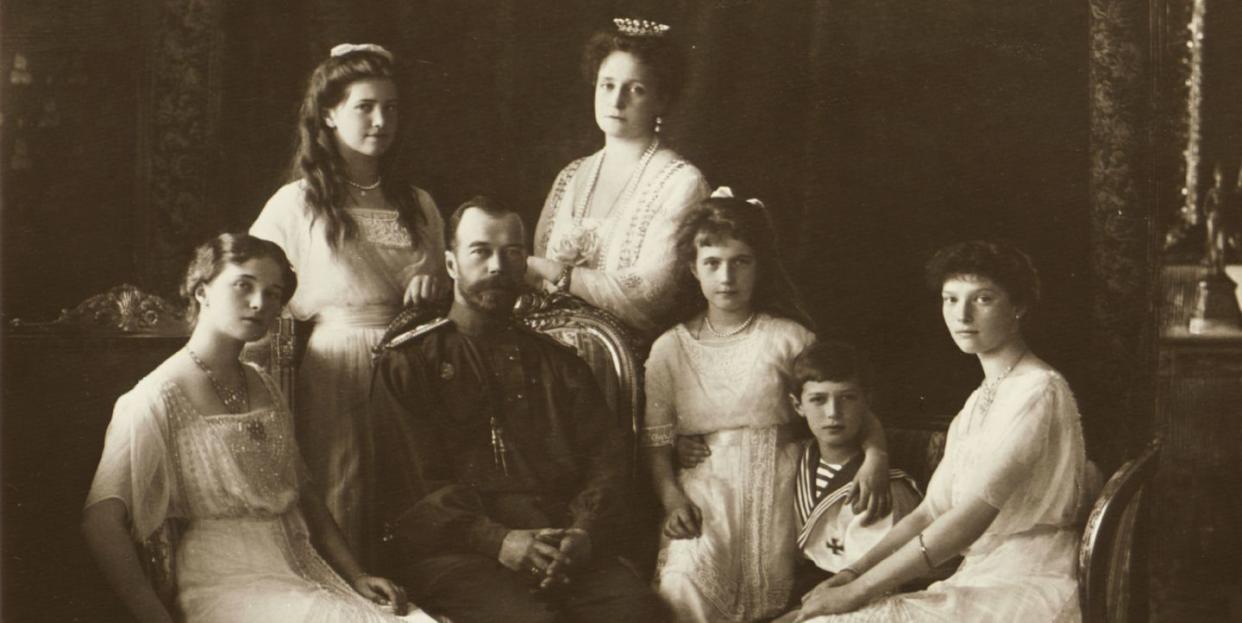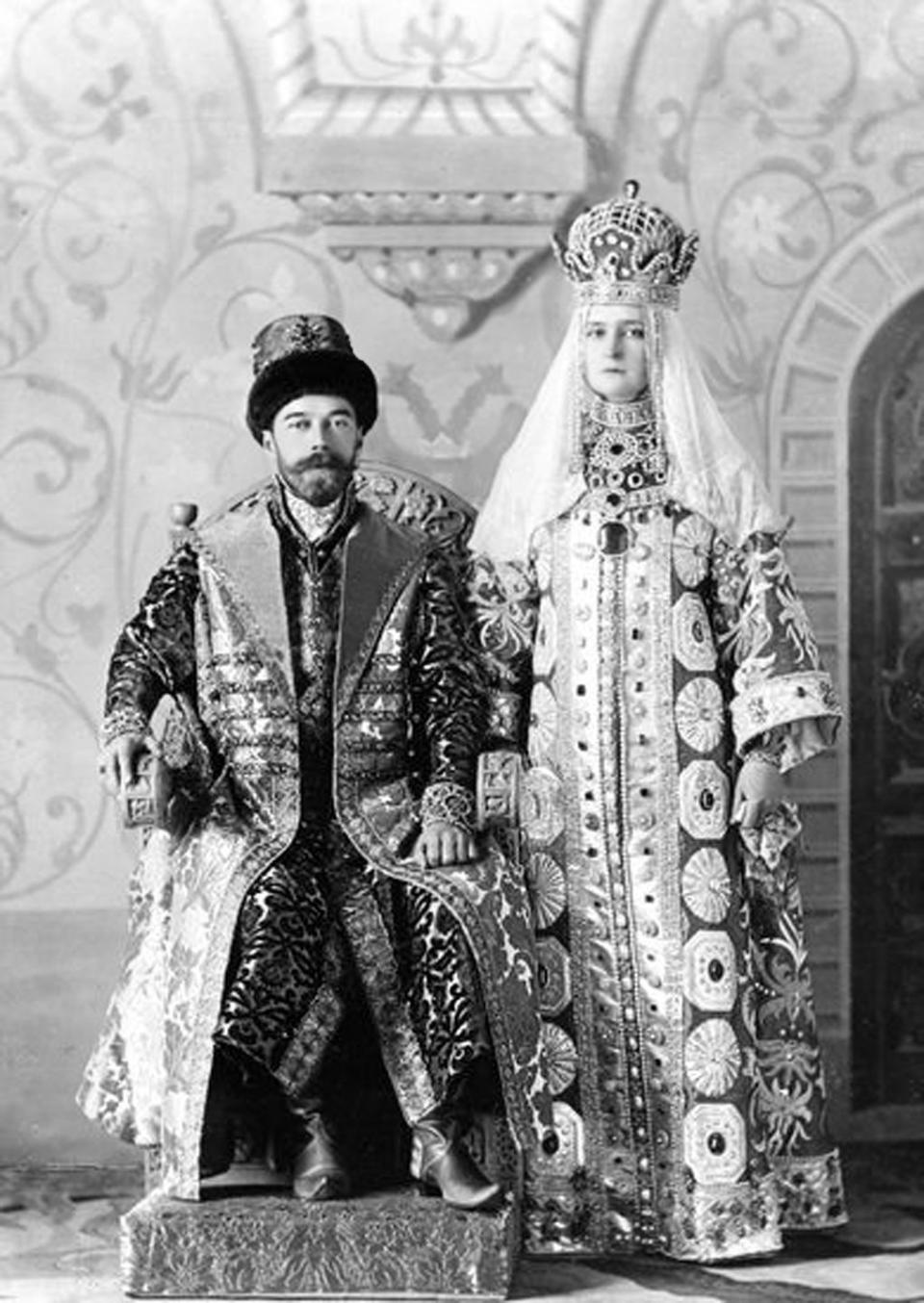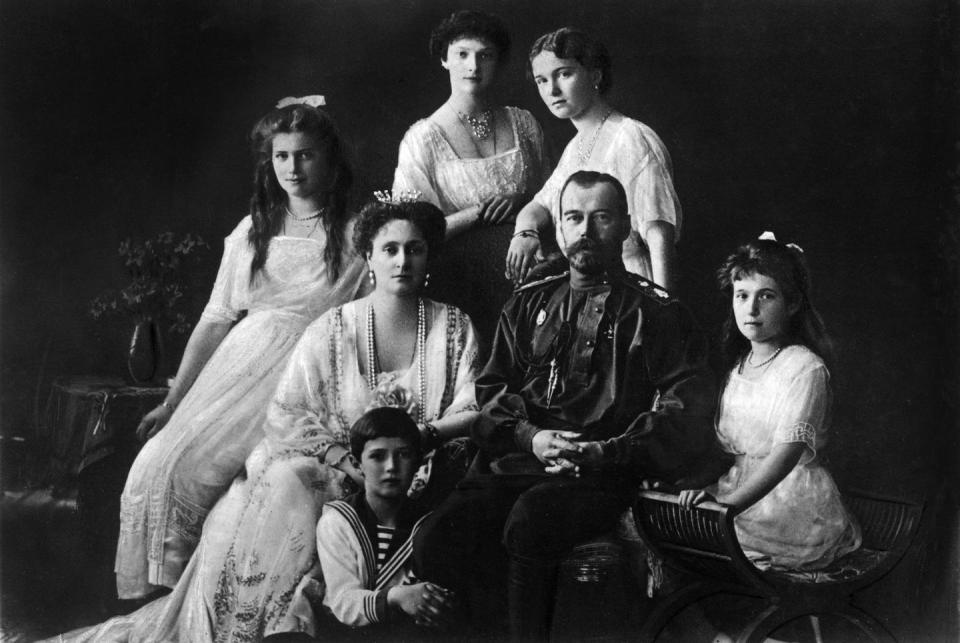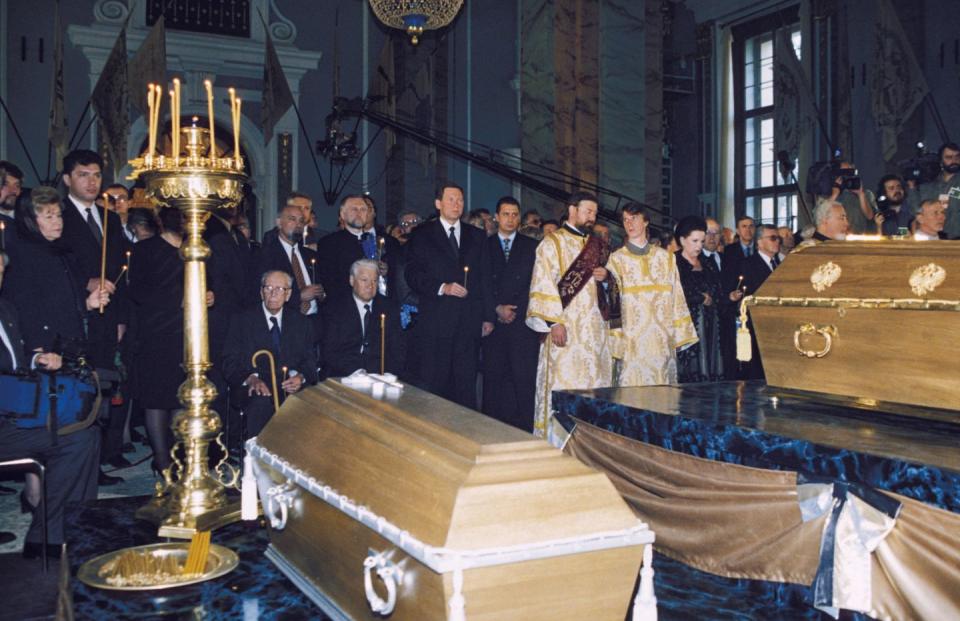Netflix's 'The Last Czars' Will Have You Glued to Your TV This Weekend

Regardless of how familiar you are with Russian history, you've likely heard of the Romanov family. The downfall of Czar Nicholas II and his family (and consequently, the downfall of the Russian Empire) has been subject of great fascination for years — hence the creation of such works as the 1997 animated film Anastasia, Amazon Prime Video's 2018 series The Romanoffs, and now, Netflix's new docu-drama The Last Czars.
The Last Czars is a six-part miniseries brought to Netflix by production company Nutopia, and the format is probably unlike anything you've ever binge-watched before. Blending narrator-led, documentary-style footage with dramatized sequences shot with actors, the series blurs the lines between fact and legend — and is sure to completely captivate you in the process.
"This is about 80% drama, 20% documentary," actress Susanna Herbert, who plays Czarina Alexandra in the series, told Harper's Bazaar UK. "It's a pretty new style because it's a really high-quality production, and epic in scale, yet you also get the additional benefit of hearing from world-class historians to explain some of the context behind the scenes."
So, before you dive headfirst into the series (all six episodes of which drop on Netflix on July 3), here's what you need to know about the true story of the Romanov family.
Becoming Czar Nicholas II
First things first: Who were Czar Nicholas II and his wife, Czarina Alexandra? A descendant of Russia's famed Romanov dynasty (which includes among its ranks such well-known names as Peter the Great and Alexander II), Nicholas was born to Czar Alexander III and Maria Feodorovna (formerly Princess Dagmar of Denmark) in 1868. When his father died of a terminal kidney disease in 1894, then-26-year-old Nicholas succeeded him as emperor of Russia and quickly married his love, Alexandra of Hesse, a German princess and granddaughter of the United Kingdom's Queen Victoria.

It has been said that Nicholas was ill-prepared to take on this role as emperor of Russia. And as history now shows, it wouldn't be long before this lack of preparedness would bring about his downfall.
Abdicating the throne
By the 1910s, Czar Nicholas and his wife had already become incredibly unpopular in their own country. Nicholas's reportedly "weak" personality, arrogance, and his failure to lead the Russian army to success in various wars had led his government to dislike and distrust him. By the time World War I began and millions of Russian men (and trains, and food supplies) were shipped off to the frontlines, the country was under extreme distress.
Meanwhile, Nicholas's wife, Czarina Alexandra, had befriended a Russian mystic named Grigori Rasputin. Believing Rasputin possessed the ability to heal her only son and the heir to the Russian throne of his hemophilia (a condition that prevents blood from clotting properly), the czarina placed great trust in him and granted him unprecedented access to the family's affairs. This gave Rasputin, a noted promiscuous and corrupt drunk, exceptional influence over Alexandra and her husband — something that neither the government nor the public was pleased with.
And so, tensions grew and protests erupted before the Romanov family ultimately lost control of the growing revolution in 1917. On March 15 of that year, Czar Nicholas abdicated the throne, ending the more than 300-year period of Romanov family rule. A provisional government led by Alexander Kerensky took power immediately.
A gruesome execution
Under the new government, former czar Nicholas, his wife Alexandra, and their five children — Olga, Tatiana, Maria, Anastasia, and Alexei — were sent to live in an isolated home in Siberia. Several months later, however, the radical socialist Bolsheviks (led by Vladimir Lenin) took power and transformed the country into the world's first communist-led state. At the mercy of this new regime, the Romanovs were transported to a merchant's house in the city of Yekaterinburg.

It was there in Yekaterinburg that the family of seven, along with four of their most loyal servants, were housed for several months before a full-on civil war broke out between the "Red" Bolshevik army and the "White" anti-revolutionary army, which was backed by foreign powers (including the United States). When the White army began to advance on Yekaterinburg in July 1918, the Red army decided to eliminate the chances of a Romanov family rescue by sentencing Nicholas, Alexandra, and their children to death.
In a messy execution conducted by local authorities in the wee morning hours of July 17, 1918, the seven members of the Romanov family — and all of their servants — were murdered in the basement of the Yekaterinburg merchant's house and then dumped in unmarked graves in the Ural Mountains. It was a gruesome killing, and an unceremonious and undignified end to a once-revered imperial family.
The Romanov legacy today
The bodies of Czar Nicholas, Czarina Alexandra, Olga, Tatiana, and Anastasia remained in their mountain graves until they were finally found in 1991. Upon their discovery and DNA identification, then-Russian president Boris Yeltsin called for their ceremonial reburial at the Romanov family crypt in St. Petersburg.

Years later, in 2007, the remains of Maria and Alexei were discovered and subsequently identified as Romanovs. Their identities have been contested by members of the Russian Orthodox Church, however, and their bodies have remained in a state archive since. Only time will tell what will happen with them — and if the Romanov family will finally be reunited.
You can watch The Last Czars on Netflix now.
('You Might Also Like',)

